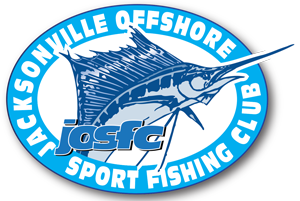In 1932 a proud new 225′ freighter was built in Leith, Scotland. With cabins of inlaid wood from around the world and tall masts she was as graceful as she was functional. For years she was a coastal freighter in European waters. During World War II, she was a supply ship ferrying arms and supplies between England and Sweden, and in 1947 she was sold for use as a coastal freighter in the North Atlantic. Along the way she acquired the name Anna, and her pristine image became tarnished. In 1981, off the coast of South Florida, she was seized in a drug bust.
From 1981 until 1986 she sat idle, her bottom gathering barnacles, her brass fittings turning green, and her magnificent wood trim drying in the Florida heat. No longer would the freighter carry cargo around the world, but she has been reborn and has a new assignment to fulfill. She has become a home for fish and an attraction for fishermen.
The Greater Jacksonville Kingfish Tournament, in cooperation with the Jacksonville Offshore Sport Fishing Club, purchased the Anna to create a new artificial reef for offshore Jacksonville. Over $25,000 was spent in purchasing, preparing and sinking the ANNA.
With cheers and shouts from the boatloads of spectators, the Anna exploded from charges placed by the Explosive Ordinance Disposal teams from Mayport Naval Air Station and Cecil Field Naval Air Station, and quickly sank to the ocean floor in 110′ of water. With her sinking, she was renamed Tournament Reef, in honor of the group who made her new life a reality.
She sits on her starboard side on the sand, her port side rising 30′ off the bottom, her once tall masts cut off before sinking. Her anchor line slants forward from her bow and disappears under shifting sand, her anchor somewhere ahead, under a sand drift.
With her sinking, Tournament Reef (TR) became an instant “home” for many marine animals. Within minutes of her arrival on the ocean floor divers reported that hundreds of baitfish had appeared, seeking safety from their predators in the shelter of the ship. Over the next few months algae and barnacles grew on the surfaces of the ship, providing food for the baitfish who in turn attracted larger game fish. Within six months of her sinking, TR had become home to snapper, grouper, atlantic spade fish, sheepshead and other bottom fish. Above the wreck amberjack, cobia and kingfish came to prey on the baitfish.
Today TR is a busy place. Numerous white sea urchins can be found on the hull, which is covered with marine growth. Clouds of baitfish surround the ship. Grouper peek out from beneath pieces of metal. Black sea bass dart in and out, and amberjack cavort in large schools. The explosives and the sea have taken their toll and the midsection of the hull has collapsed outward onto the sand. However, the bow and the stern have excellent high profiles, attracting the types of fish that like high profiles such as amberjack, bluefish and kingfish. The midsection, with its lower profile, is more likely to attract the bottom fish such as grouper and flounder. As it turns out, TR has something for everyone, and should provide excellent fishing for many, many years to come. It is a reef the Greater Jacksonville Kingfish Tournament and the JOSFC can be proud of—a job well done!

